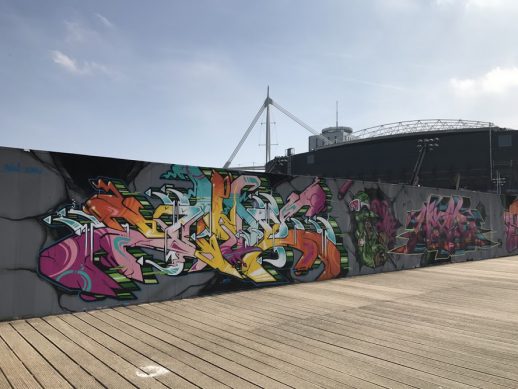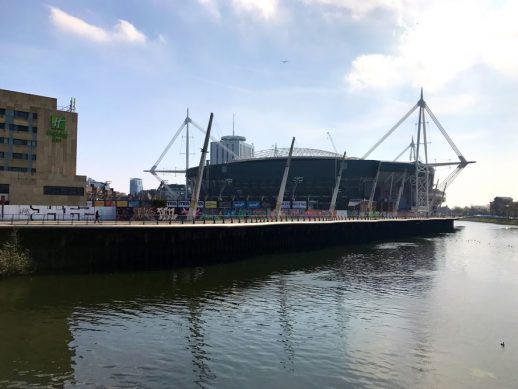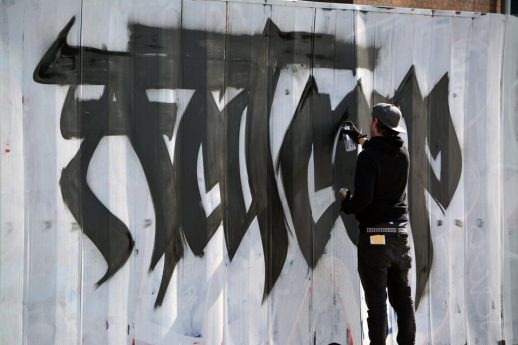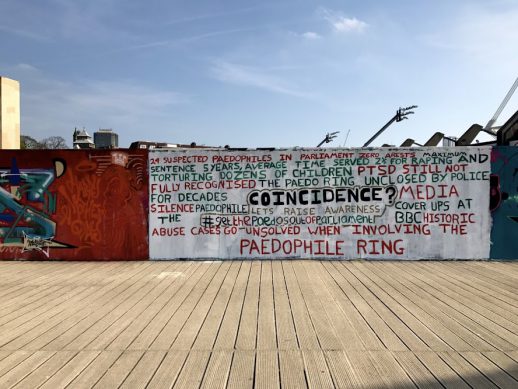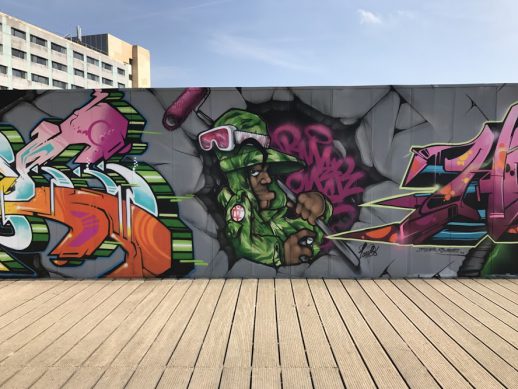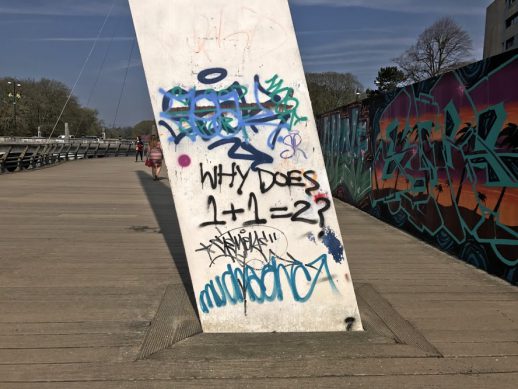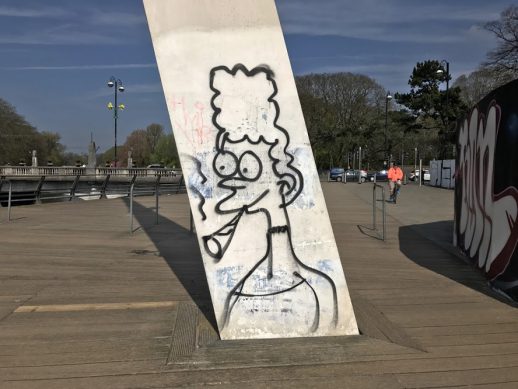Words by Helia Phoenix. Pictures also by Helia Phoenix, unless otherwise credited.
Where can you find existential ponderings about mathematical logic, sharing wall space with messages about Mother’s Day, paedo ring cover ups in the BBC, and a sketch of Marge Simpson with a massive spliff in her mouth? In other cities, perhaps this sort of thing is omnipresent, but in Cardiff, there’s only one place: on the banks of the River Taff, at the graffiti wall on Millennium Walk.
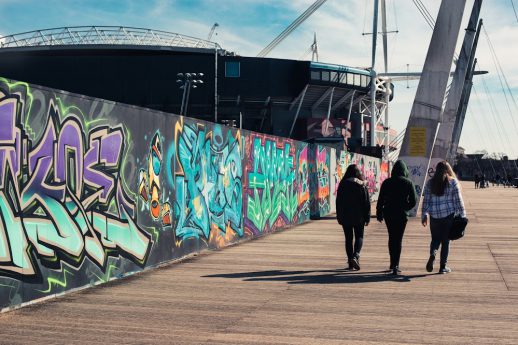 Image by Lorna Cabble
Image by Lorna Cabble
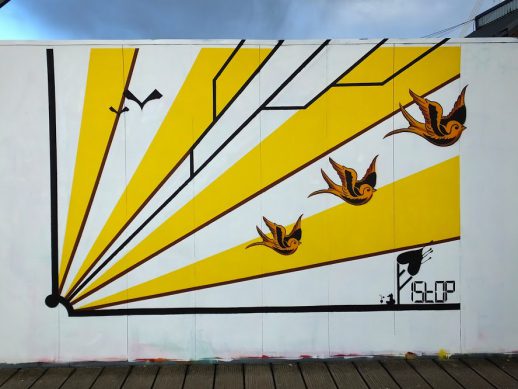 Image by Diff Graff
Image by Diff Graff
Graffiti tends to be something you associate with deepest darkest inner city areas, so it shows the knife edge between nature and urban life here. Cardiff apparently has more green spaces than any other UK core city, and the fact that the river flows right through the centre means a certain amount of civic confusion, like the peregrine falcon that nests in the clock tower of city hall, or the Millennium Walk graffiti wall, an incongruously perched barrier between the serenity and peace of flowing water and the grimy edge of Cardiff Arms Park.
Initially the boards along the walkway went up as blank hoardings, and what always happens happened: people tagged, scribbled and made a mess all over them. The council sent people to paint over the tags. Then more tagging happened, of course, because what’s more tempting than a freshly painted white wall?
Eventually some forward-thinking artists applied for permission to paint murals on the walls, and what do you know – the random tagging and unsightly scribbles stopped (for the most part … see also: Marge Simpson with spliff). Over the last couple of years, the paintings have extended, so they now cover the entire stretch with beautiful and thought-provoking artwork. We’ve had paint jams celebrating International Women’s Day and murals as monuments to everything from nature to artists that have sadly passed away.
 From International Women’s Day paint jam – Image by The Cardiffian
From International Women’s Day paint jam – Image by The Cardiffian
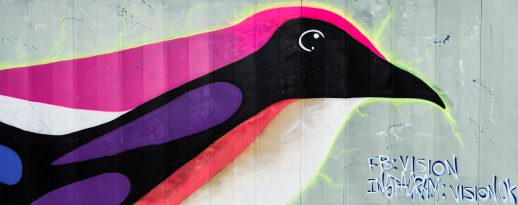 From Back to Nature paint jam – Image by Craig Kirkwood
From Back to Nature paint jam – Image by Craig Kirkwood
Since the technicolour takeover, facilitated by local paint institution Oner Signs, the wall has enjoyed frequent re-dressings, as various paint jams and festivals taking place throughout the year keep perspectives fresh and antisocial scribbling to a minimum. It’s a bold location for a graffiti wall – right in the centre of town, along one of the most photographed spots of the river. It’s a beautiful if unusual way to take in “street art”: with a stadium towering above, waders and other birds splashing about below, and water taxis slowly chugging along beside, taking tourists between town and Cardiff Bay.
Recently I heard that the wall was being reoccupied by the council, to use for advertising for the imminent city-wide takeover of the UEFA Champions League. I wasn’t planning on featuring the graffiti wall quite so early in my essays about the Taff, but when I heard that the murals were being removed (with no plans to return the wall to local artists afterwards), that was my deadline set.
I’m a big fan of street art. When you look at alternative culture, in so many ways, Cardiff is the poor little sister of neighbouring city Bristol: where art literally takes over blocks and blocks of public space at a time, and where new live music venues seem to be opening at the rate that Cardiff’s are closing (as for Cardiff’s newest bars, most are extensions of Bristol independents). With the introduction of Cardiff’s Empty Walls projects and the Millennium Walk graffiti wall right in the city centre, I started feeling good about our public spaces: like perhaps they could actually be places for the people, rather than for more and more advertising.
But apparently, this is not the case – not when there’s football involved. It’s big business, no one could deny that, and so between 1-3 June, all eyes will be on Cardiff. And actually, I’m excited about the event. I spend so much bloody time eulogising about the place, I want all the things I love about it to be visible to everyone who’ll be seeing the city for the first time. Surprisingly though, this doesn’t include colossal advertisements for Gazprom or Unicredit. What I do love is our community spirit, and how that translated into the murals on this wall.
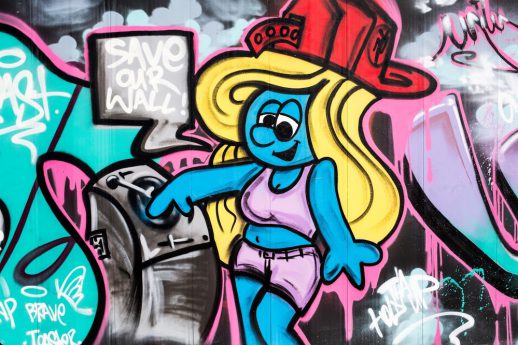 Image by Lorna Cabble
Image by Lorna Cabble
I read Naomi Klein’s No Logo when I was 18. The book had a profound impact on me and the way I thought about and interpreted visible space in the urban environment. I had never realised how much of it is sold for advertising. Ever tried to ignore a 50 foot high billboard? It’s pretty much impossible, although with Cardiff being so green, you can forgo the hard sell and disappear into nature within seconds of being in the city centre: sitting on the banks of the river, or through the town gates into Bute Park, 130 acres of parkland that the Taff laps through before even reaching the graffiti wall.
Cardiff is a small city where everything clashes and collides, and there might not always be a sense of coherence. It’s not known for having any kind of specific look or typical architecture, which is the result of being such a rich place during the Industrial Revolution: rich merchants would travel all over the world, come back, and demand whatever buildings they had seen abroad to be built in the city centre. This is why the most modern parts of Cardiff Castle are such a cultural hotch-potch, and why you can see so many different styles of Victorian-era buildings on Queen Street. In other words, the location of the graffiti wall might have seemed improbable, but that juxtaposition is what I loved so much about it, and what made it work so well. It wasn’t hidden away behind some garages, or in a park in suburbia: it was a city centre art gallery, just outdoors, and on the banks of a river.
The Millennium Walk wall is still here for the moment, although signs have just gone up announcing its imminent closure. Local writers have set up a petition to plead that the council include the artistic community in any decisions about the wall’s future. I signed and shared, sure, and I encourage you to as well, if you can. And I’m writing this piece, but unfortunately I feel like it’s more for legacy than protest. It’s also to lament this change – the transformation of the one part of the river where the surroundings were almost as striking as the water itself.
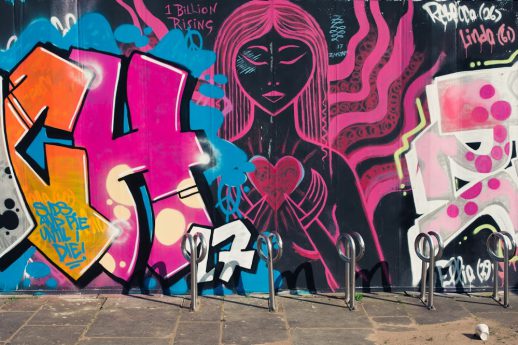 Image by Lorna Cabble
Image by Lorna Cabble
*
Helia Phoenix has written for Rolling Stone, The Guardian, and Kruger Magazine, and now runs the We Are Cardiff project. The previous instalments of her column can be found here. You could also take a peek at her website or follow her on Twitter, if you felt like it.
